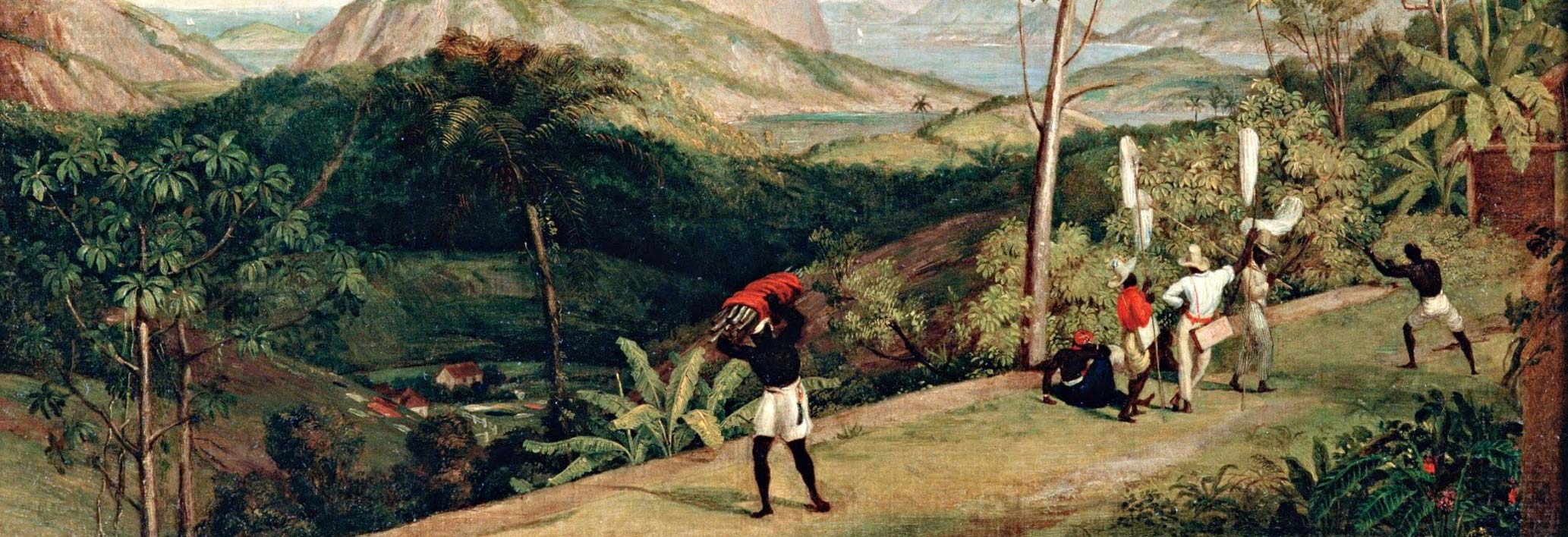Esteban Dorantes (sometimes called the diminutive “Estebanico” or “Estevanico” in contemporary documents) was an enslaved North African explorer who was among the first representatives of the Old World to encounter peoples of today's American Southwest and is one of the earliest known persons of African descent to set foot on what would later become the United States of America (in 1528).
Dorantes was born around 1513 in Azemmour, Morocco. His career as an explorer began in 1528 with the disastrous Florida expedition of Pánfilo de Narváez. Narváez landed in Tampa Bay and marched part of his forces into the interior, searching for riches. Overwhelmed by native forces near present-day Tallahassee, the Spaniards fled south to the coast. When they realized their ships were gone, the stranded explorers constructed five barges and sailed west along the Gulf coast until fierce storms off of Texas sank three of the barges. In November 1528, the survivors landed near present-day Galveston.
Esteban and fifteen other men survived the winter only to be enslaved by Karankawa Indians. Only Esteban, his master Andrés Dorantes, Cabeza de Vaca, and Alonso del Castillo Maldonado survived to escape from their captors five years later in 1534. The four wandered across modern-day Texas and northern Mexico, presenting themselves as healers and religious figures called “Sons of the Sun.” Esteban was particularly adept at learning languages, functioning as an interpreter.
A chance encounter with Spaniards in northwestern Mexico ended the group's years of wandering. Despite their truthful reports of very little wealth, their return to Mexico City sparked excitement about the lands north of Mexico. When the three European survivors refused to head an expedition, Viceroy Antonio de Mendoza purchased Esteban and sent him on Fray Marcos de Niza’s 1539 journey in search of wealth.
By previous arrangement, Esteban ranged several days' journey ahead of the Franciscan, maintaining his “Son of the Sun” persona to ensure safe passage and leaving crosses of various sizes to signal the magnitude of his findings. Esteban experienced no trouble until he reached the Zuni pueblo of Hawikuh. Disregarding a warning to stay away, he proceeded into the pueblo where he was taken prisoner and then executed by Hawikuh’s authorities in the spring of 1539.
Word of Esteban's fate reached Fray Marcos, and he decided against entering the pueblo. From afar, the bright sun made Hawikuh’s adobe apartments gleam gold. Fray Marcos returned to Mexico City convinced he had found the fabled golden city of Cíbola. Eager to exploit such riches, the viceroy quickly organized another expedition under Francisco Vásquez de Coronado. In Hawikuh, Coronado found only mud huts and a few stones of turquoise.
Esteban's appearance in Hawikuh made a lasting impression on the Zunis. Legends make Esteban the impetus for Chakwaina, a black ogre spirit, who reflects the Pueblo fears of European conquest.
Online Resources
“Estevanico’s Route, 1527-1539” https://alchetron.com/Estevanico
Map of Azemmour: http://maroc.eklablog.net/azemmour-a103119131
Bibliography
Adorno, Rolena, and Patrick Charles Pautz, eds. and trans. Álvar Núñez Cabeza de Vaca: His Account, His Life, and the Expedition of Pánfilo de Narváez. Vols. 1–3. Lincoln: University of Nebraska Press, 1999.
Cabeza de Vaca, Álvar Núñez. The Narrative of Cabeza de Vaca. Edited and translated by Rolena Adorno and Patrick Charles Pautz. Lincoln: University of Nebraska Press, 2003.
Flint, Richard, and Shirley Cushing Flint. “Esteban de Dorantes.” New Mexico Office of the State Historian. www.newmexicohistory.org/filedetails.php?fileID=464.
Gordon, Richard. “Following Estevanico: The Influential Presence of an African Slave in Sixteenth-Century New World Historiography.” Colonial Latin American Review 15, no. 2 (2006): 183–206.
Gutiérrez, Ramón A. When Jesus Came, the Corn Mothers Went Away: Marriage, Sexuality, and Power in New Mexico, 1500-1846. Stanford: Stanford University Press, 1991.
Hammond, George P., and Agapito Rey, eds. Narratives of the Coronado Expedition, 1540–1542. Coronado Cuarto Centennial Publications, 1540-1940 ; vol. 2. Albuquerque: University of New Mexico Press, 1940.
Logan, Rayford W. “Estevanico: Negro Discoverer of the Southwest: A Critical Reexamination.” Phylon 1, no. 4 (1940): 305–14.
McDonald, Dedra S. “Intimacy and Empire: Indian-African Interaction in Spanish Colonial New Mexico, 1500–1800,” in Confounding the Color Line: The Indian-Black Experience in North America, edited by. James F. Brooks (Lincoln: University of Nebraska Press, 2002).
Oviedo y Valdez, Gonzalo Fernández. “The Expedition of Pánfilo de Narváez.” Edited and translated by Harbart Davenport. Southwestern Historical Quarterly 27–28 (July 1923–April 1924): 120–241.
rich, jeremy. "Dorantes, Esteban de." Dictionary of African Biography, edited by Ed. Louis Gates Jr.. , edited by and Emmanuel K. Akyeampong. . Oxford African American Studies Center, http://www.oxfordaasc.com/article/opr/t338/e0575 (accessed Thu Sep 05 10:29:31 EDT 2019).
Taylor, Quintard. In Search of the Racial Frontier : African Americans in the American West, 1528-1990. New York: W.W. Norton, 1998.
Weber, David J. The Spanish Frontier in North America. Yale Western Americana Series. New Haven: Yale University Press, 1992.
Author
Dedra McDonald Birzer and J.M.H. Clark
Adapted by
James Almeida and Steven J. Niven
Contributing Institutions
Hutchins Center for African & African American Research, Harvard University, Cambridge, MA.
Oxford University Press (USA) African American Studies Center.





